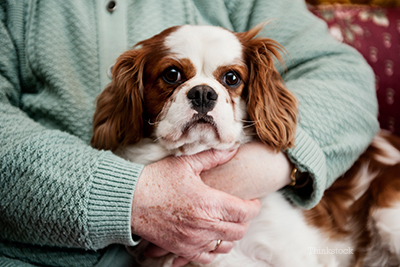
Overview
Lipomas are benign (noncancerous), freely movable, relatively slow-growing, fat-filled tumors that are quite common in dogs, especially older ones. They are soft, easily manipulated, and located just under your dog’s skin. While they can develop anywhere, they are most commonly found on your dog’s undercarriage, in the chest or abdomen. These tumors, while ugly, generally do not pose any health threat to your furry friend. They are the most common type of benign tumor in older dogs—almost every senior dog has at least one.
The exact cause of these nonthreatening but ugly lumps is unknown; they are part of the natural aging process for many dogs.
Symptoms
Lumps and bumps are the most common signs of a lipoma. They are usually round or oval in shape, form under the skin, and are freely movable and well-defined.
Diagnosis
Your veterinarian will perform a thorough physical exam on your dog and may recommend diagnostic tests to confirm that the lump is a lipoma. These tests may include:
- Needle aspiration
- Microscopic evaluation of cells
- Biopsy of the tissue
Treatment
While lipomas don’t usually pose any serious health threat, removal is sometimes recommended if they limit your dog’s mobility appreciably, or they grow too large, making your dog scratch or bite at them.
If your veterinarian recommends surgery, he or she will most likely perform presurgical blood tests to ensure your pet is healthy and can handle the anesthesia and surgical procedure. These tests may include:
- Chemistry tests to evaluate kidney, liver, and pancreatic function, as well as sugar levels
- Antibody tests to identify if your pet has been exposed to tick-related or other infectious disease
- A complete blood count to rule out blood-related conditions
- Electrolyte tests to ensure your pet isn’t dehydrated or suffering from an electrolyte imbalance
- Urine tests to screen for urinary tract infection and other disease, and to evaluate the ability of the kidneys to concentrate urine
- A thyroid test to determine if the thyroid gland is producing too little thyroid hormone
- An ECG to screen for an abnormal heart rhythm that may indicate underlying heart disease
If your veterinarian recommends leaving the lipoma alone, it will be important to monitor it for any changes. In some cases, a lipoma can grow too large and become uncomfortable. If you spot any abnormal lump or bump on your pooch, you should contact your veterinarian.
While lipomas are not life-threatening, other causes of bumps can have more serious side effects.
Prevention
There is nothing you can do to prevent your pet from getting lipomas; they are a natural part of the aging process for many dogs.
If you have any questions or concerns, you should always visit or call your veterinarian – they are your best resource to ensure the health and well-being of your pets.

